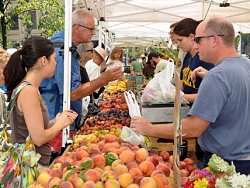
Food policy writer Baylen Linnekin notes the massive regulatory differences between the farmers markets in his new hometown of Seattle versus what he sees elsewhere across the country:
Last weekend I shopped for the first time at a farmers market in Seattle’s University District, near my new home in the city’s Wallingford neighborhood. I visited vendors there who sold everything from hazelnuts to salmon, beef, lamb, cheeses, root vegetables, kimchi, sauerkraut, kefir, hard cider, and quesadillas.
This was a different sort of farmers market visit for me—and not just because the U District market has a far better and more interesting selection of foods than did the Washington, D.C.-area markets I used to frequent. What made this trip really different is that I typically find it doesn’t take much for farmers and other market vendors to open up about how some combination of federal, state, and local regulations is making their lives—and livelihoods—increasingly difficult.
Over the years, I’ve visited a rich diversity of farmers markets in at least two-dozen states—including in Louisiana, Massachusetts, Hawaii, North Carolina, Iowa, Texas, Illinois, and California—and have heard farmers and other vendors rightly groan in nearly every case about overly burdensome regulations. But at the U District market, the only vendor complaints I heard were about the rain and snow that day, or about the seasonally affected shortage of vendors and their offerings.